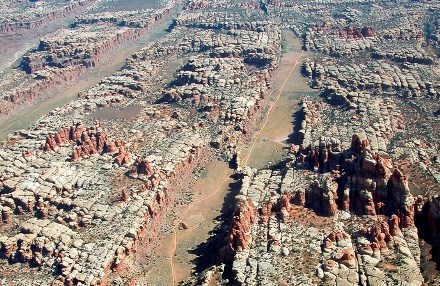Deposited:
Pennsylvanian Period (286 to 320 million years ago)
Depositional Environment:
Evaporites (salts) from landlocked seas
Appearance:
Salt and Gypsum with black shales
Examples:
Pockets are exposed along the Colorado River in Cataract Canyon
Note:
The Paradox Formation has played a large role in shaping the landscape of southeast Utah, especially around Arches and Canyonlands. When conditions are right, the weight of overlying rock causes the deposits in the Paradox Formation to liquefy and flow through whatever channels offer the least resistance. This subsurface movement can have drastic effects on the surface, causing rock layers to uplift or sink and fracture under the stress. This sets the stage for the creation of arches, grabens, and needles.

